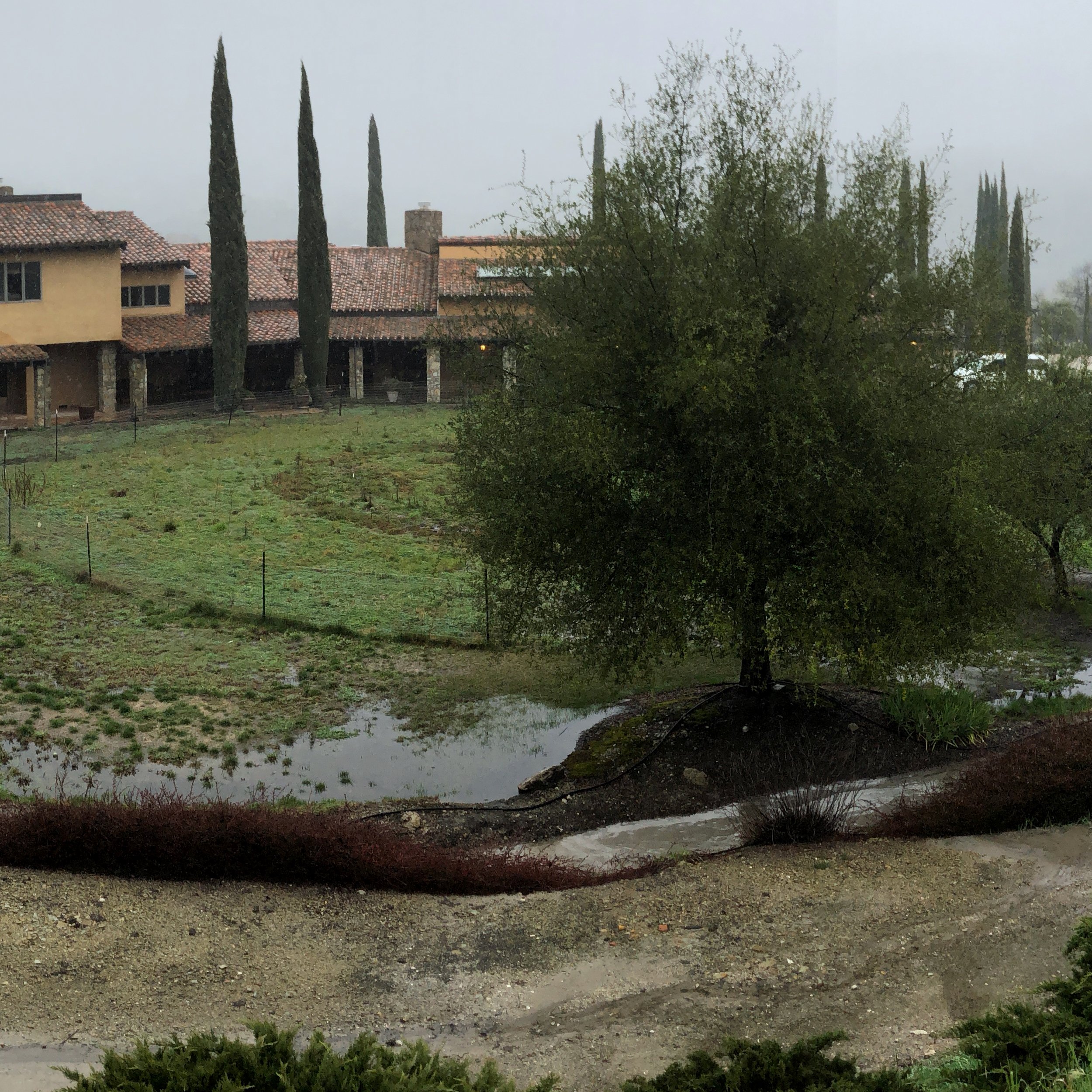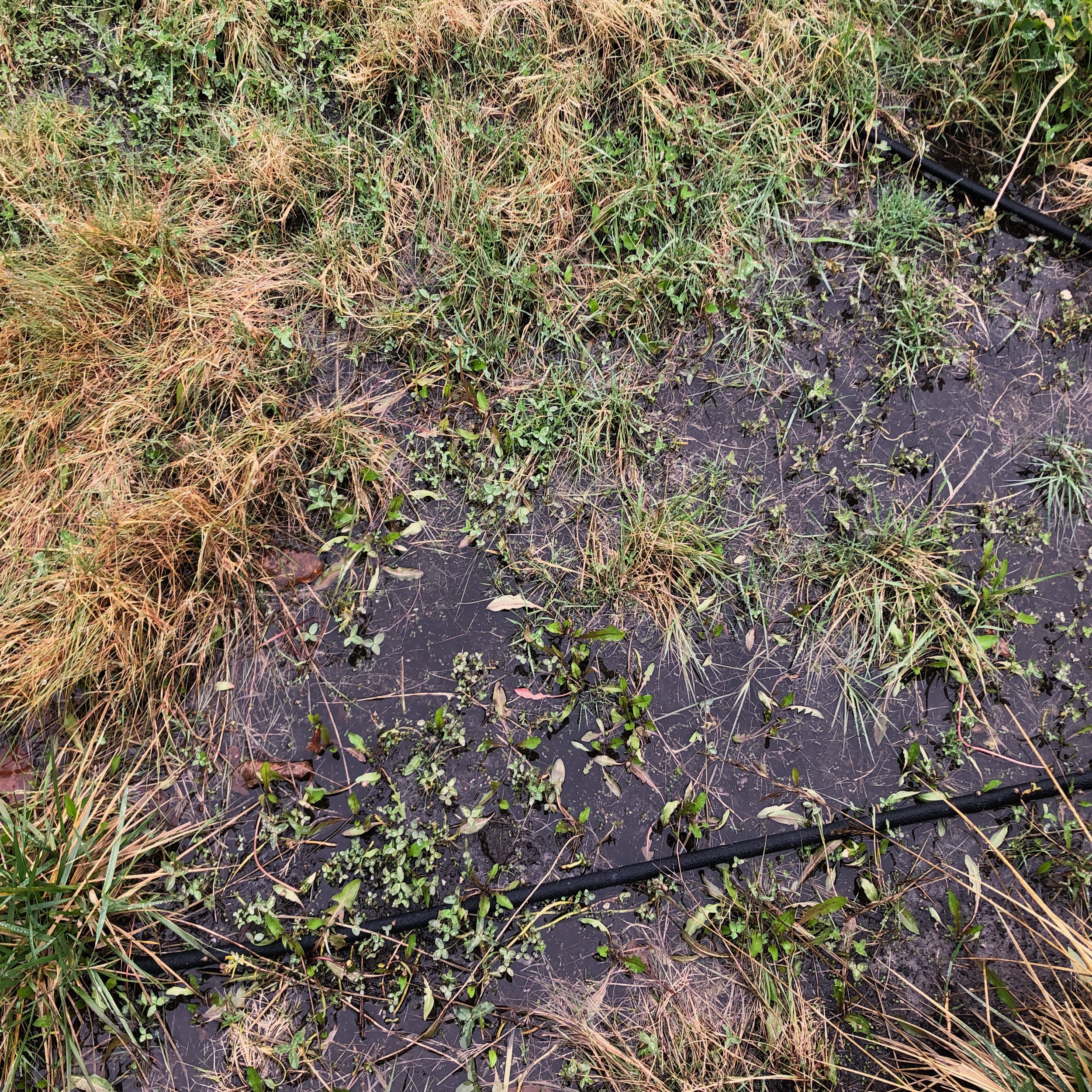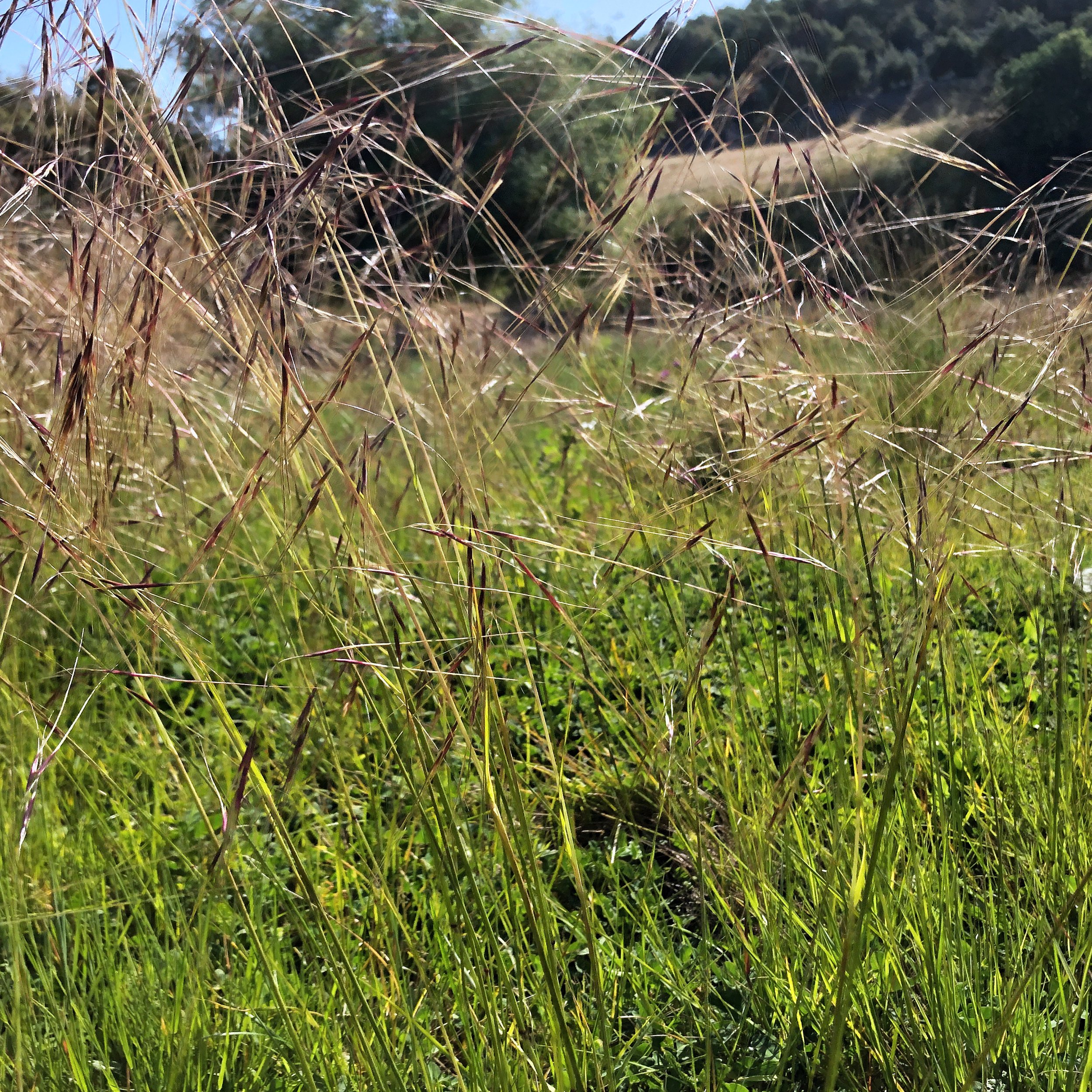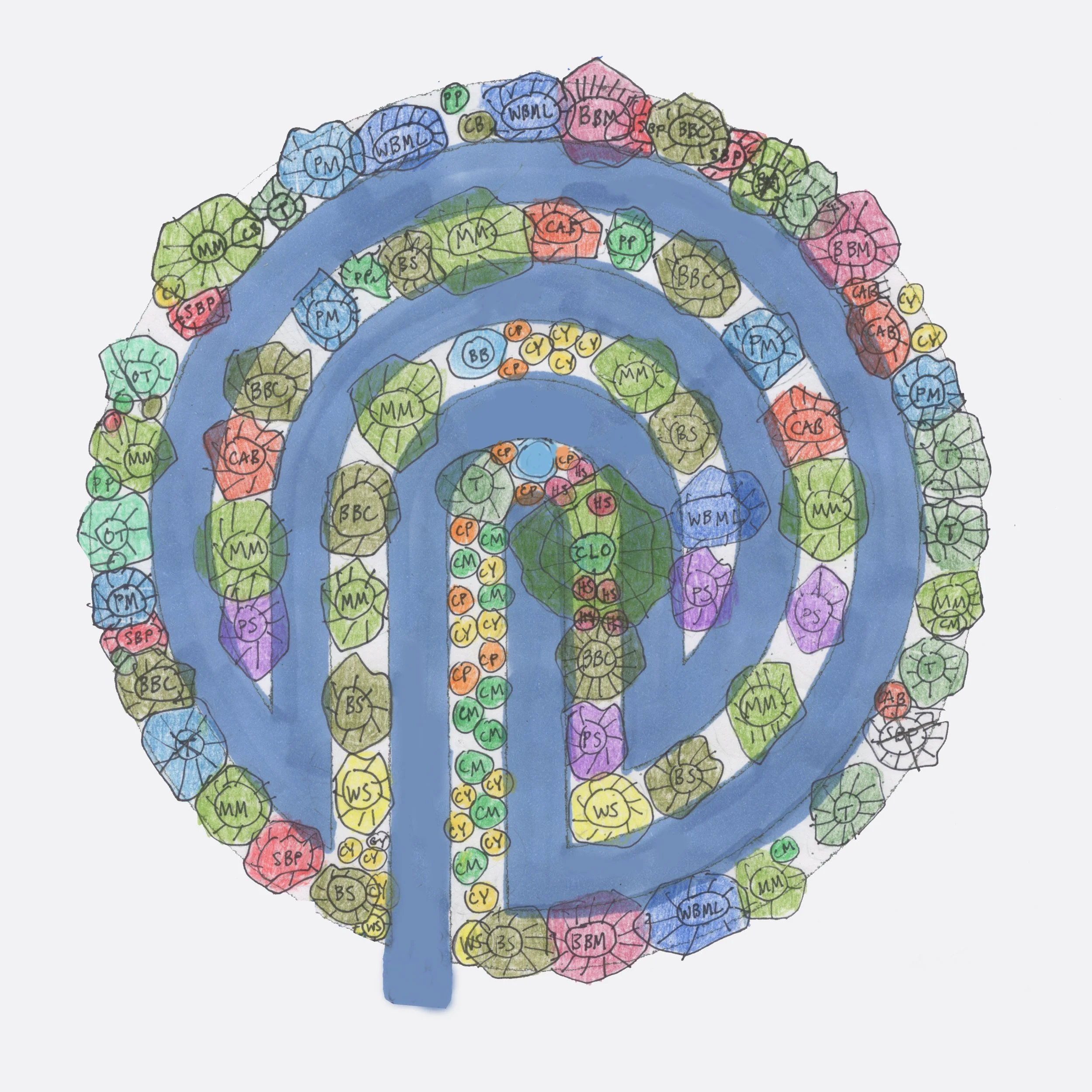rancho arroyo grande
2022 - 2024
During the end of 2022 and into the winter months of 2023, heavy rains or “atmospheric rivers” flooded parts of California including the Central Coast. Arroyo Grande was one of the highest hit areas in San Luis Obispo county as the Arroyo Grande creek’s levee had breached, flooding farmlands, roads, and mismanaged areas of land where the soil had been compacted due to overgrazing animal herds and feral pigs that had an appetite for the highest irrigated areas. The compacted soil resulted in greater erosion as the soil is unable to absorb the sudden heavy level of moisture causing increased runoff. Due to the road closures in the area and through San Luis Obispo Country, I was unable to visit RAG and the restoration project between January and March 2023 (roughly 2 months). When I finally made it there in early spring, the rains hadn’t fully stopped and there were noticeable changes in the area—roads turned into rivers, small lakes had grown in size, tree trunks were immersed in water, and large areas of land where agriculture had been overworked with heavy tillage, overgrazing, and agrochemical use was eroded. It seemed more like the rivers were taking back the land. Afterall it was the roads and homes built on top of floodplains that redirected the rivers and waterways that once transected the landscape, not to mention the clearcutting and deprivation of healthy fire cycles that caused the forest’s inability to adapt to heavy precipitation.
I took notice of the areas in the circle restoration plots where water was collecting and had been impacted by the flooding. I realized that I needed to further build the soil. For 20 or so years before I began this project, the area consisted of non-native combinations of bermuda and other grasses followed by bare soil caused by the pigs’ rooting. My plan had been to mimic the Coastal Oak Woodland and Sage Shrub plant communities found on less touched parts of RAG (portals to what the land looked like pre-colonization). The idea for this next phase was to build the soil by creating a canopy system with more native plants and utilizing mulch from the freshly trimmed oak trees from the land. By mimicking the varied vegetation of the natural ecosystem, I aimed to utilize shrubs and trees to create windbreak to shelter the native grasses and herbs, slow rainfall in canopies to a more easily absorbed pace, protect the soil surface, hold soil in place with varied and deeper root structures, and finally to create shelter for the many creatures contributing to making a healthier ecosystem.
Towards the end of Spring 2022, as the days were heating up rapidly and I was watering the newly sown seeds more frequently, I found that the current sprinkler system that was in place (for irrigating the prior lawn) was not efficient for the native grasses. I designed a new plan experimenting with a soaker hose-drip irrigation system. The idea was that because the area I was restoring was mainly sandstone bedrock beneath the thin damaged topsoil, water that would not flow straight down would flow across the field. I designed the irrigation hoses to be looped around each of the four trenches of the circle thinking that some water would drain into the very porous rock (captured and used when needed). The trapped moisture would then get moved around within the sandstone and spread to other areas. This idea did work for a bit, but I soon found out that the soaker hoses were not made to be sitting in full sun for the entire day, all summer long. Eventually they started to break apart. I returned to what was available - the sprinkler system (useful for when I was not at RAG) and hand watering.

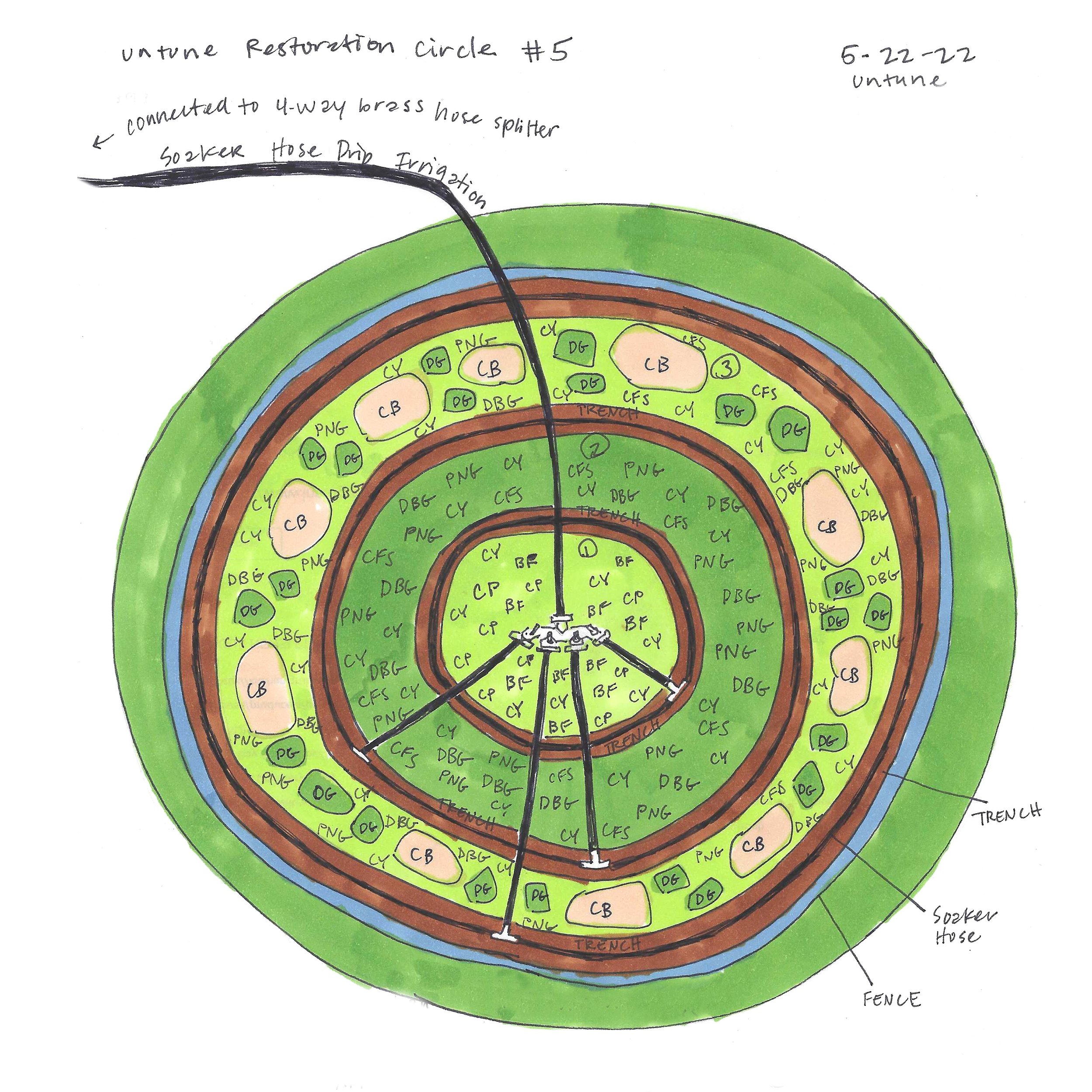
I did not have prior experience planting on bedrock, but I learned from observing the plants that grew in other parts of the land (also bedrock) and from articles such as one in The Juniata Journal of Geology where bedrock’s porous make-up is described as creating space where plants can grow their roots. As plant roots grow and break up the rock, the formation itself releases CO2 which both helps cool the atmosphere around the formation and gives the plants the carbon dioxide they need to grow. In other words, the bedrock assists in the plants’ survival while the plants break down the rock into more formed and healthy soil. I experienced this nutrient-rich forming of soil in just a year, despite RAG’s rancher-groundsman initially trying to tell me that the plants will have a hard time growing on bedrock. There were definitely some challenges, but from what I experienced, the bedrock was not one of them. In fact I spent a great deal of time looking at the native plants that were growing right on the bedrock hill surrounding the project areas. They were doing great and included: a variety of Ceanothus like California Lilac; California Buckwheat (Eriogonum fasciculatum); California Sagebrush (Artemisia californica); Black Sage (Salvia mellifera); Mountain Mahogany (Cercocarpus); Flannel Bush (Fremontodendron californicum); Desert Globemallow (Sphaeralcea ambigua); Purple Sage (Salvia leucophylla); and Coastal Live Oak (Quercus agrifolia) among many others. These native plants inspired what I chose to include as part of the labyrinth overstory design for the final project phase. Up until this stage, I had focused on replacing the non-native water thirsty grasses with native ones as well as California wildflowers, yarrow, poppies, and buckwheat—a native meadow habitat.
Images below are of the plant ecologies and flora found in the area - mostly native aside from the olive orchards and vineyards.









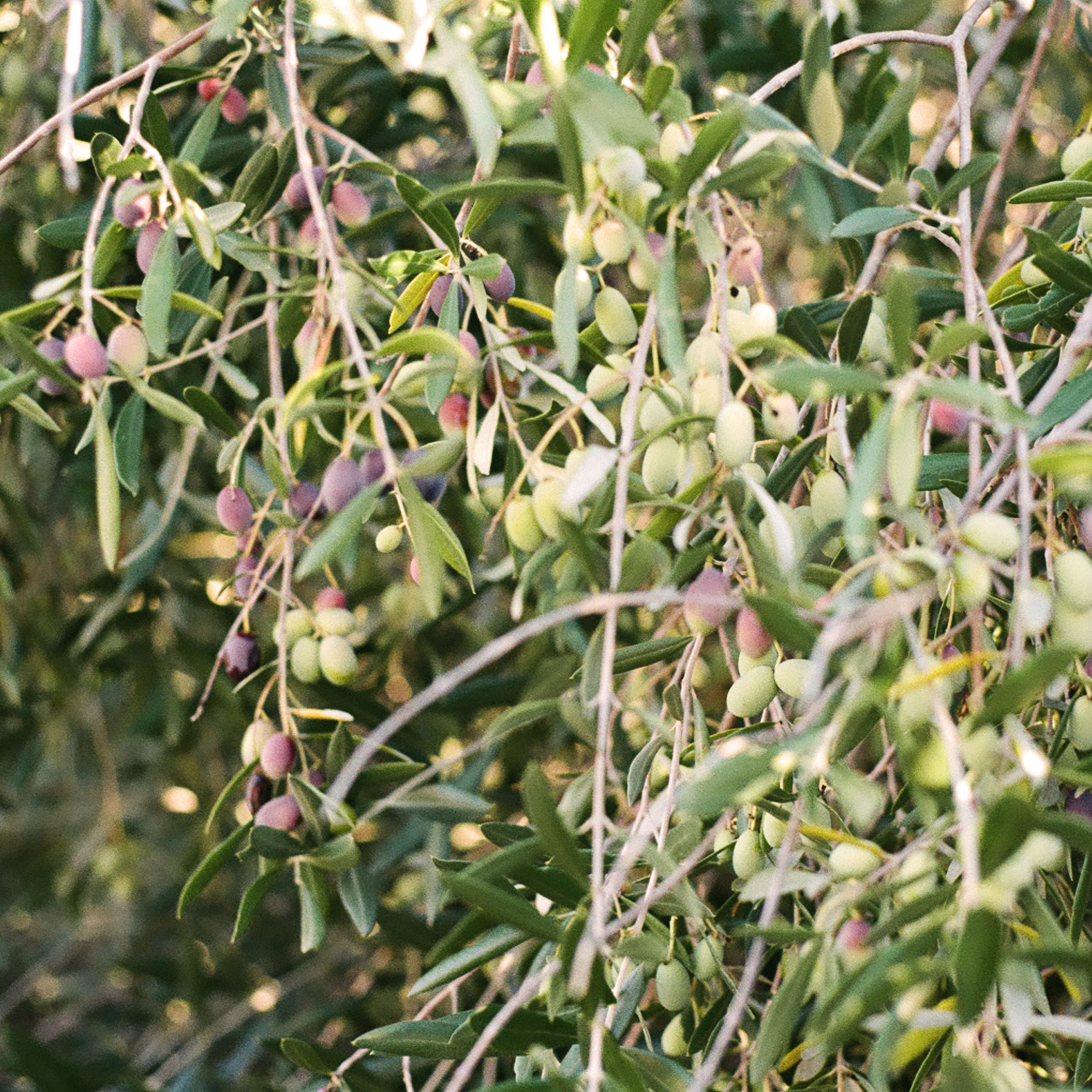

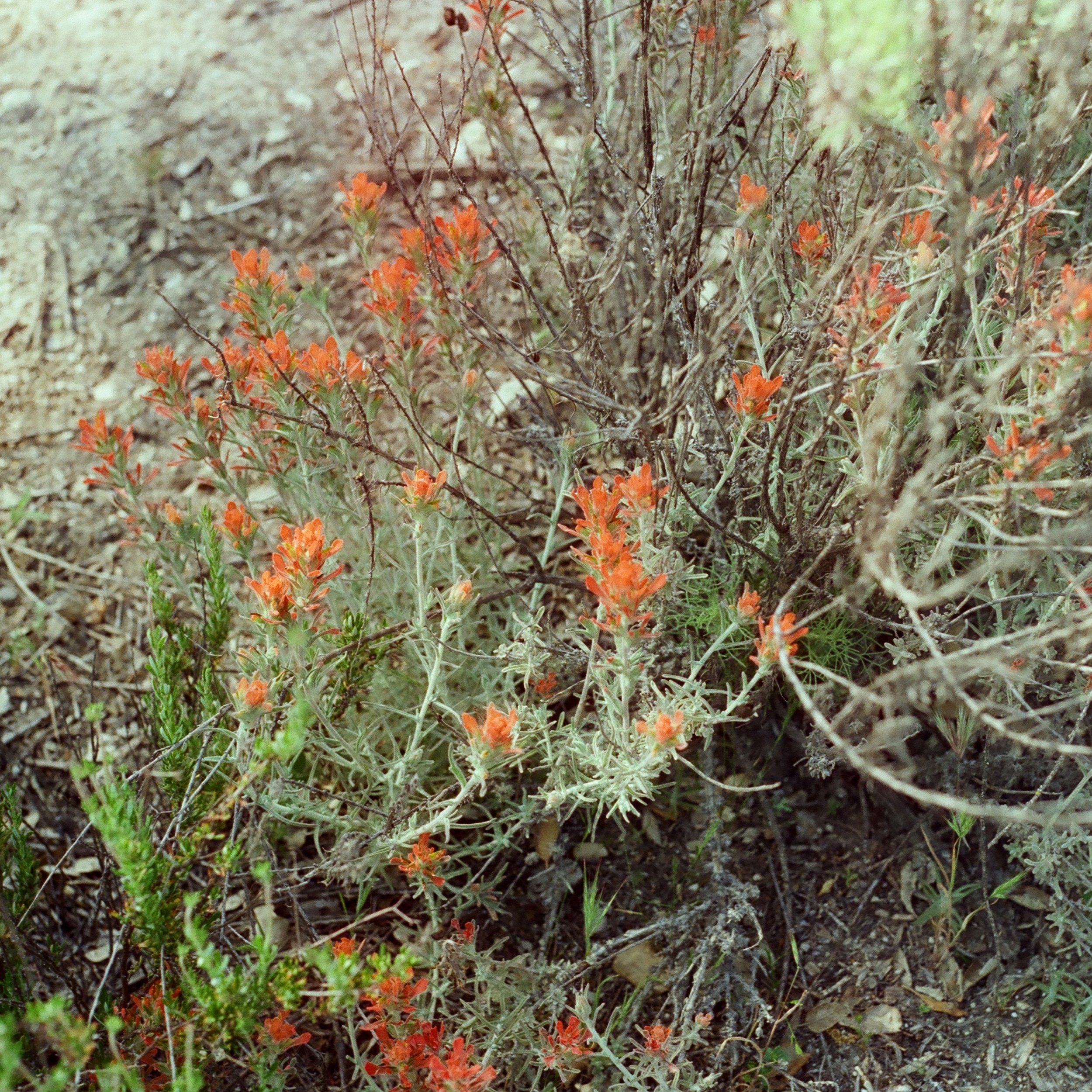
The labyrinth design included river rock pathways, areas for sitting, sanctuaries for wild habitat, hugelkulturs to increase water holding capacity for bedrock situation, and a variety of native shrubs and trees. Please follow the images below to get a glimpse of my process during different phases of the project.
Also note that the project abruptly ended and I was unable to finish the labyrinth design. Thirty five plants were planted as well as a Coastal Live Oak which held a very special place in my heart.
